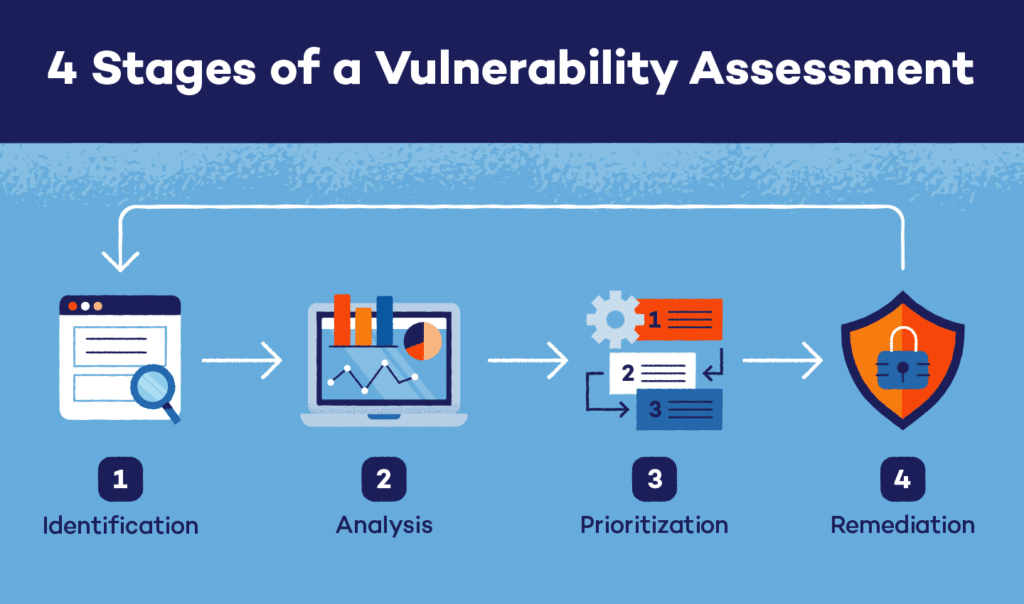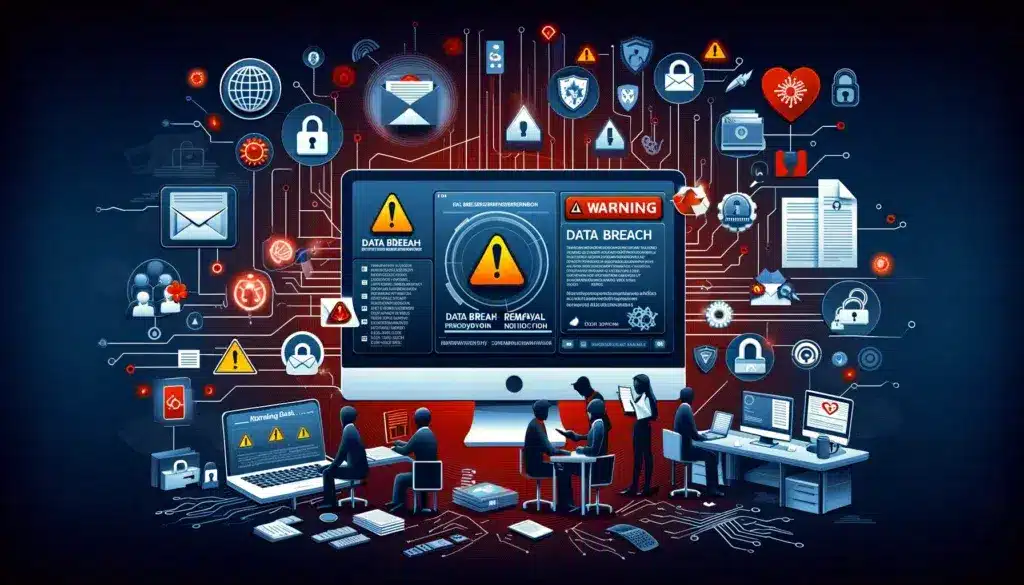In a rapidly evolving digital landscape, where nearly every aspect of our lives is connected to the internet, the risks posed by data breaches have never been higher. A data breach can have far-reaching consequences, including financial loss, reputational damage, legal repercussions, and loss of customer trust. Cybersecurity risk assessments are essential tools that organizations can utilize to identify, evaluate, and address vulnerabilities before they can be exploited. By understanding potential risks and implementing preventive measures, organizations can significantly reduce their exposure to breaches. This article explores how cybersecurity risk assessments can help prevent data breaches and provides actionable insights to organizations looking to strengthen their cybersecurity posture.
Key Takeaways
- Cybersecurity risk assessments provide a proactive approach to identifying vulnerabilities and threats that could lead to data breaches.
- Early identification of vulnerabilities and prioritizing high-risk areas is essential for effective mitigation.
- Risk assessments ensure compliance with industry regulations like GDPR, HIPAA, and PCI DSS, avoiding legal penalties.
- Employee training, based on insights from risk assessments, helps reduce human errors that contribute to data breaches.
- Continuous monitoring and updating of cybersecurity measures are necessary to adapt to evolving threats and emerging technologies.
Understanding Cybersecurity Risk Assessments

A cybersecurity risk assessment is a process designed to identify vulnerabilities, threats, and risks that could potentially compromise the security of an organization’s information systems and sensitive data. It is a proactive approach to identifying and addressing potential cybersecurity weaknesses before they are exploited by cybercriminals. These assessments evaluate an organization’s infrastructure, policies, and protocols to ensure that they can withstand and mitigate various types of cyber threats.
The ultimate goal of a risk assessment is to help organizations prioritize and address critical vulnerabilities that could lead to data breaches, financial losses, and reputational damage. By assessing risks, organizations can improve their defenses, protect sensitive data, and comply with industry regulations, ensuring that they remain resilient against evolving cyber threats.
Key Steps in Conducting a Cybersecurity Risk Assessment
- Asset Identification: Understanding what needs protection is the first step in any cybersecurity risk assessment. This involves identifying critical assets such as databases, intellectual property, software applications, and hardware. Often, these are the prime targets for cyberattacks.
- Threat Identification: A thorough assessment involves identifying the threats that could exploit vulnerabilities. These threats can range from external cybercriminals, nation-state actors, insider threats, and even natural disasters (e.g., power outages or floods that could disrupt services).
- Vulnerability Assessment: This step evaluates weaknesses in an organization’s system or infrastructure that could be exploited by identified threats. Vulnerabilities could include software bugs, inadequate firewall configurations, unencrypted data, or lack of multi-factor authentication.
- Risk Evaluation: After identifying assets, threats, and vulnerabilities, the risk evaluation process helps determine the likelihood of an attack and the potential impact it could have on the organization. This is done by analyzing the combination of the threat’s likelihood and the severity of the consequences if the vulnerability is exploited.
- Mitigation Strategies: After identifying the risks, businesses need to put controls in place to mitigate these risks. These could involve technical solutions like patching vulnerabilities, changing access controls, or implementing encryption, as well as organizational changes like employee training and awareness programs.
- Continuous Monitoring and Assessment: Cybersecurity is not a one-time task. It is a continuous process that requires periodic re-assessment and adaptation to new threats. Regular risk assessments help organizations stay ahead of emerging threats, vulnerabilities, and changes in the technology landscape.
The Rising Concern of Data Breaches

As organizations increase their dependence on digital technologies, the risk of cyberattacks and data breaches grows exponentially. In fact, data breaches have become one of the most common and devastating security incidents worldwide. According to the Cost of a Data Breach Report 2023 by IBM, the average cost of a data breach has reached $4.45 million, an increase of 2.3% from the previous year. For large organizations, the cost can be much higher.
The causes of data breaches are multifaceted, but common reasons include:
- Outdated Software and Systems: Many organizations continue using older systems or software that are no longer supported, making them vulnerable to exploits.
- Human Error: Employees often fall victim to phishing attacks, click on malicious links, or improperly handle sensitive data. These actions can lead to breaches or compromise internal security.
- Poor Access Controls: Insufficient access control policies, like weak passwords or improper user permissions, allow unauthorized users to gain access to sensitive data.
- Ransomware: Cybercriminals use ransomware to encrypt company files, holding them hostage until the organization pays a ransom. Ransomware attacks often occur because organizations fail to secure their networks adequately.
- Insider Threats: Employees, contractors, or partners with access to an organization’s systems may intentionally or unintentionally cause data breaches. Insiders may leak data or be tricked into downloading malware.
The implications of a data breach can extend beyond immediate financial loss. The reputational damage, customer trust loss, and potential legal consequences make data breaches particularly damaging. Regulatory frameworks like the General Data Protection Regulation (GDPR) in Europe, Health Insurance Portability and Accountability Act (HIPAA) in the U.S., and the Payment Card Industry Data Security Standard (PCI DSS) impose heavy fines and penalties on organizations that fail to protect data adequately.
How Cybersecurity Risk Assessments Help Prevent Data Breaches
Cybersecurity risk assessments are a powerful tool in the fight against data breaches. By systematically identifying and addressing vulnerabilities, businesses can significantly lower the likelihood of a successful cyberattack. Here’s how risk assessments can play a direct role in preventing data breaches:
1. Understanding the Nature of Cybersecurity Risk Assessments
A cybersecurity risk assessment is a comprehensive process used to evaluate the effectiveness of an organization’s cybersecurity practices. It identifies potential threats, weaknesses, and gaps within systems, applications, or networks that may expose sensitive data to unauthorized access, theft, or compromise.
The risk assessment process generally involves the following steps:
- Identification of assets: Mapping out the organization’s assets, including databases, servers, employee workstations, and intellectual property.
- Risk analysis: Identifying potential threats (external or internal) that could exploit vulnerabilities in the system.
- Vulnerability assessment: Assessing weaknesses in the infrastructure and data handling processes.
- Risk evaluation: Assigning severity levels to each risk to prioritize which vulnerabilities require immediate attention.
- Mitigation strategies: Developing specific plans or measures to reduce the impact of the identified risks.
2. Identification and Protection of Sensitive Data
The first critical step in a cybersecurity risk assessment is identifying what constitutes sensitive data. In many organizations, this includes:
- Customer data: Personally identifiable information (PII) such as names, addresses, Social Security numbers, credit card information, etc.
- Corporate secrets: Intellectual property, product designs, proprietary algorithms, and confidential business strategies.
- Financial data: Banking details, financial records, and transaction histories.
Knowing exactly what data needs protection is fundamental to securing the organization. Risk assessments help identify the systems that store or process sensitive data and ensure that they are given proper security measures such as encryption, secure access control, and data classification protocols. By thoroughly evaluating where sensitive data resides, businesses can apply security measures tailored to protect it from breach attempts.
For example, a financial services company may discover during a risk assessment that its database containing client financial records is not encrypted in transit, leaving it vulnerable to man-in-the-middle attacks. Addressing this gap with encryption could prevent hackers from accessing sensitive data even if the system is breached.
3. Identifying Vulnerabilities and Weak Points in the Network

Vulnerabilities are the weaknesses in a system or network that cybercriminals can exploit to gain unauthorized access to sensitive data. These weaknesses can arise due to:
- Outdated software or hardware: Older systems and software that are no longer supported may not receive timely security patches, making them easy targets for attackers.
- Unpatched vulnerabilities: Even common software, such as web browsers or enterprise applications, can have vulnerabilities that are actively exploited by attackers until patches are applied.
- Misconfigured network settings: Improper firewall settings, open ports, or lack of segmentation between different parts of a network can allow attackers to move laterally once they gain access to the system.
- Weak access controls: Failing to implement strong password policies or relying on default credentials can leave systems vulnerable to unauthorized access.
Risk assessments include vulnerability scans that specifically look for these weak points within an organization’s IT environment. Once vulnerabilities are identified, they can be patched or mitigated before a breach occurs.
For instance, a company might discover that its internal server configuration allows employees from one department to access sensitive data from another department. By identifying this vulnerability, the company can restrict access and enforce role-based access controls (RBAC) to prevent unauthorized data access.
4. Prioritizing and Categorizing Risks
Cybersecurity risk assessments go beyond just identifying vulnerabilities; they also prioritize risks based on two primary factors:
- Likelihood: How likely is the vulnerability to be exploited by a malicious actor?
- Impact: What would the consequences be if this vulnerability were exploited (e.g., data breach, financial loss, regulatory penalties)?
By evaluating risks in this way, organizations can determine which vulnerabilities pose the most significant threat and require immediate attention. This risk-based approach allows organizations to allocate resources effectively, focusing on the highest-priority vulnerabilities that pose the most significant threat.
For example, while a vulnerability in a customer-facing web application might have a high likelihood of being exploited (due to its exposure on the internet), the financial records stored on an internal database could have a higher impact if breached (due to potential legal and reputational consequences). Therefore, the database’s protection would be prioritized over the web application vulnerability.
5. Implementing Mitigation Strategies to Address Identified Risks
Once vulnerabilities have been identified and risks assessed, the next step is to implement mitigation strategies to reduce or eliminate those risks. This involves a combination of technical, procedural, and organizational measures. Some common strategies include:
- Patching and updating software: Ensuring all software is up-to-date and all patches are applied promptly helps close known vulnerabilities that cybercriminals often target.
- Network segmentation: Dividing networks into smaller, isolated segments to limit the potential damage in case an attacker breaches one part of the network. This strategy makes it harder for hackers to move between segments.
- Encryption: Encrypting sensitive data both at rest and in transit ensures that even if attackers manage to intercept or steal the data, it remains unreadable and useless.
- Access control: Implementing strict access controls (e.g., least privilege access, multi-factor authentication) limits who can access critical systems and data. Strong authentication mechanisms, such as biometric scans or hardware tokens, can help ensure that only authorized personnel have access to sensitive data.
- Security monitoring and intrusion detection: Continuous monitoring of network activity using tools like intrusion detection systems (IDS) and security information and event management (SIEM) solutions helps detect and respond to threats in real-time.
For instance, an organization might implement multi-factor authentication (MFA) on its employee login portals after discovering that password-based access is a vulnerability. This could prevent attackers from using stolen credentials to access sensitive systems.
6. Creating Incident Response Plans for Faster Recovery
While prevention is key, it’s also crucial for organizations to prepare for potential breaches. A well-documented incident response plan (IRP) ensures that in the event of a data breach, the organization can respond quickly and minimize damage.
Risk assessments help create a roadmap for:
- Identifying breach incidents: Using detection mechanisms like IDS and system logs to quickly detect when a breach has occurred.
- Containment: Limiting the scope of the breach by isolating affected systems and networks to prevent the attacker from gaining further access.
- Eradication: Removing malware, vulnerabilities, or compromised accounts from the system to restore normal operations.
- Recovery: Restoring data from backups, patching systems, and bringing services back online securely.
- Communication: Notifying relevant stakeholders, such as customers, employees, and regulatory bodies, in line with legal obligations.
For example, in the event of a ransomware attack, the risk assessment might have identified the need for frequent off-site backups. Having a proper backup strategy ensures that the organization can recover without paying the ransom.
7. Monitoring and Continuous Improvement
The digital landscape and cyber threats are constantly evolving, which is why cybersecurity is a continuous process. Regular risk assessments and continuous monitoring are essential to staying ahead of new threats.
- Ongoing threat intelligence: Continuously gathering and analyzing data on new vulnerabilities, threats, and attack techniques can help organizations anticipate and defend against emerging risks.
- Penetration testing: Periodic simulated attacks by ethical hackers help identify weaknesses in an organization’s defenses before real attackers can exploit them.
- Regular security audits: Conducting routine security audits and revisiting risk assessments can uncover new vulnerabilities and provide opportunities to strengthen defenses.
For example, an organization that regularly conducts penetration testing might discover new vulnerabilities in a recently deployed mobile application, enabling them to patch the flaws before they can be exploited.
8. Compliance with Legal and Regulatory Requirements
In addition to protecting against data breaches, cybersecurity risk assessments help ensure that the organization remains compliant with industry regulations. Non-compliance can not only result in fines and penalties but also increase the likelihood of data breaches.
Some of the most significant compliance frameworks include:
- GDPR (General Data Protection Regulation): A European regulation that mandates the protection of personal data and requires organizations to implement robust cybersecurity measures.
- HIPAA (Health Insurance Portability and Accountability Act): A U.S. law that governs how healthcare organizations should protect patient data.
- PCI DSS (Payment Card Industry Data Security Standard): A set of security standards for organizations that handle credit card transactions.
During the risk assessment process, businesses can identify any gaps in their compliance posture. For instance, a company might identify that sensitive financial data is not being encrypted during transmission, which could violate PCI DSS requirements. The company can then apply the necessary encryption measures to ensure compliance and avoid penalties.
9. Reducing the Risk of Insider Threats
Data breaches are not always caused by external attackers; insider threats are a significant risk. Employees, contractors, or third-party vendors who have access to critical data can intentionally or unintentionally compromise security.
A cybersecurity risk assessment can help address insider threats by:
- Implementing access controls: Restricting access to sensitive data based on employee roles ensures that only authorized personnel can access specific information.
- Monitoring user activity: Analyzing user behavior through monitoring tools can help identify unusual patterns, such as accessing data they don’t normally use.
- Employee training: Ensuring employees understand their role in maintaining cybersecurity helps reduce the chances of accidental breaches, such as falling for phishing attacks or mishandling data.
For instance, a risk assessment may highlight the need to monitor employees with high-level access to critical data, ensuring that their actions are in line with organizational policies and reducing the potential for insider threats.
10. Cost-Effective Risk Management
Cybersecurity risk assessments allow organizations to take a cost-effective approach to managing risks. By identifying the most significant risks and focusing resources on mitigating those risks, companies can avoid the expensive fallout of a data breach.
While implementing security controls, conducting assessments, and training employees may have upfront costs, these expenses are far less than the financial impact of a data breach. In addition to direct costs such as fines, legal fees, and lost revenue, businesses can also incur significant reputational damage, which can erode customer trust over time.
For example, a company might invest in stronger encryption methods for customer data after identifying this as a high-priority risk. This upfront cost is negligible compared to the potential losses from a breach involving exposed customer information.
Also Read : How Can Cybersecurity Insurance Protect Your Organization From Digital Threats?
Conclusion
In today’s interconnected world, cybersecurity risk assessments are a fundamental component of any organization’s defense strategy against data breaches. By proactively identifying vulnerabilities, assessing risks, and implementing mitigation measures, organizations can significantly reduce their exposure to potential attacks. With data breaches becoming more frequent and costly, conducting regular cybersecurity risk assessments is not just advisable; it is essential for maintaining the integrity, security, and trust of any business.
7 FAQs
What is a cybersecurity risk assessment?
A cybersecurity risk assessment is a process of identifying, evaluating, and mitigating potential risks and vulnerabilities in an organization’s IT infrastructure and data systems to prevent cyberattacks and data breaches.
How often should a cybersecurity risk assessment be performed?
Risk assessments should be conducted at least annually or whenever significant changes are made to the IT infrastructure. However, more frequent assessments may be required in high-risk industries or when new threats emerge.
What common vulnerabilities are often identified in risk assessments?
Common vulnerabilities include outdated software, weak passwords, improper user access controls, lack of data encryption, unsecured network configurations, and inadequate employee training.
Can a cybersecurity risk assessment prevent all data breaches?
While a cybersecurity risk assessment significantly reduces the likelihood of a breach, it cannot guarantee 100% prevention. It is a proactive measure that helps mitigate risks, but ongoing vigilance and adaptation are required to stay ahead of evolving threats.
How does a risk assessment help improve compliance?
Risk assessments identify gaps in compliance with data protection laws like GDPR, PCI DSS, and HIPAA, helping organizations address weaknesses before they result in legal penalties or data breaches.
What is the role of employee training in preventing data breaches?
Employee training plays a crucial role in preventing breaches caused by human error, such as falling for phishing scams or mishandling sensitive data. Risk assessments can highlight areas where additional training is needed.
What are some examples of threats that a risk assessment can identify?
Threats that can be identified include cyberattacks like phishing, ransomware, and SQL injection, as well as internal threats such as disgruntled employees or insufficient access controls.

